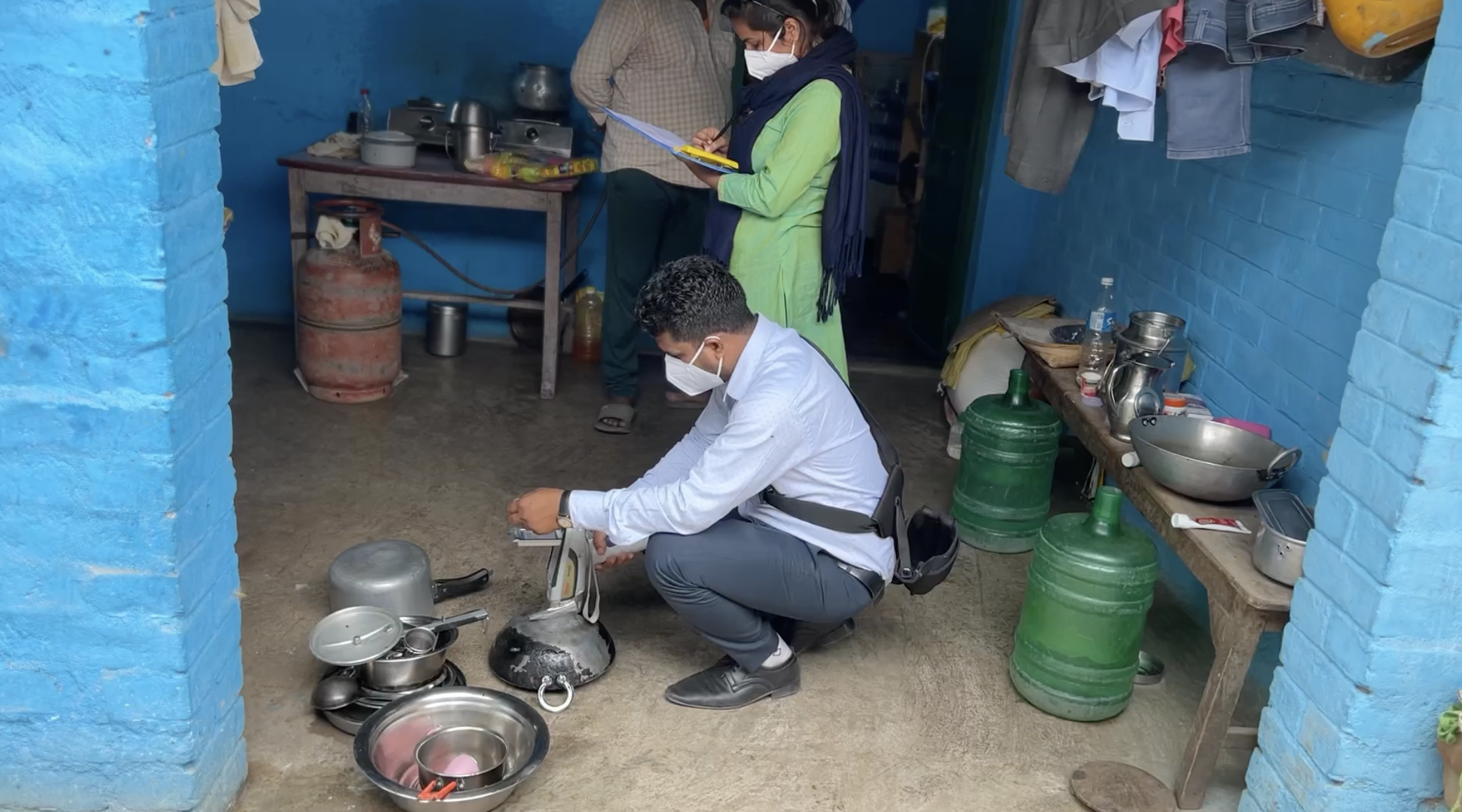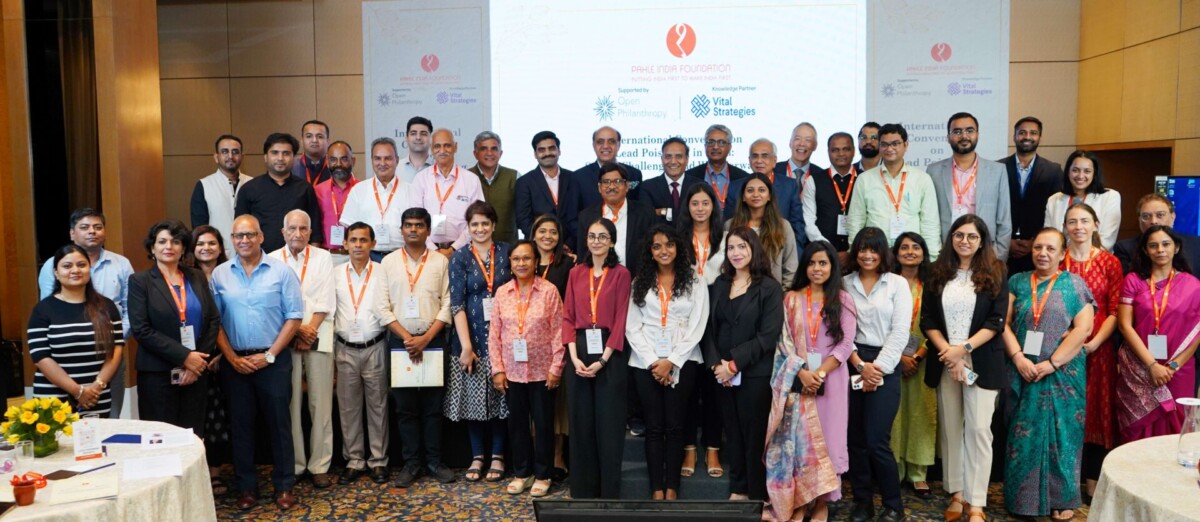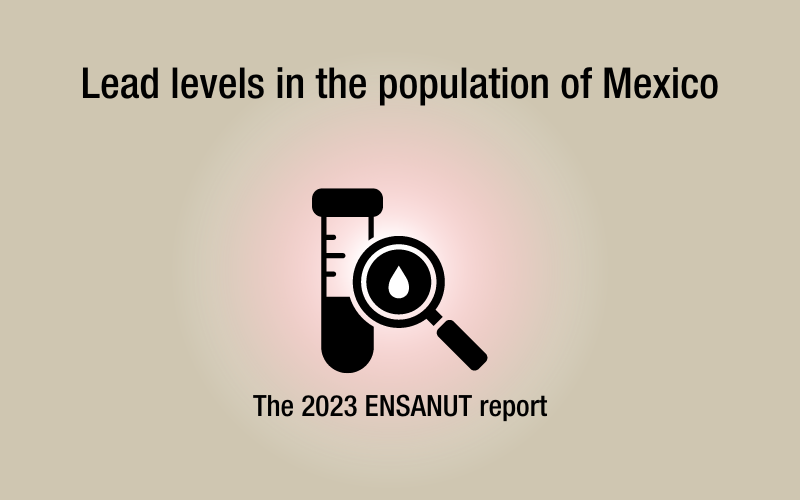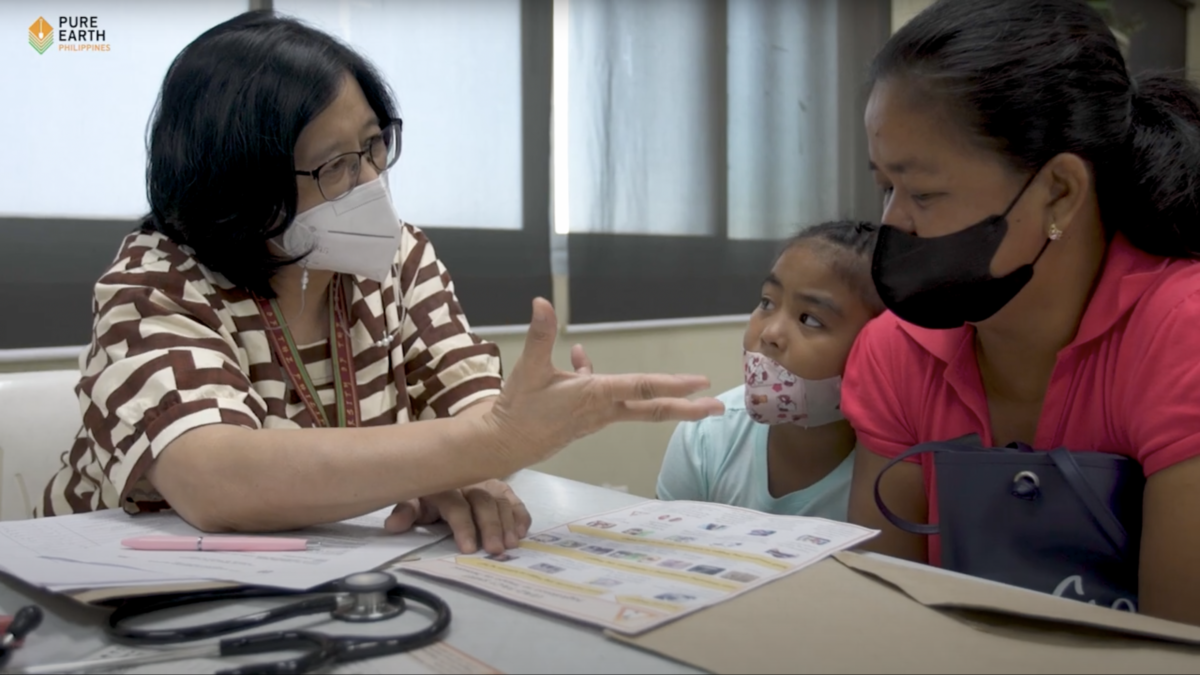Pure Earth is pleased to announce the launch of a new program, “Mitigating Lead Exposure in Low- and Middle-Income Countries,” being implemented in Colombia, Egypt, Ghana, India, Indonesia, Peru, and the Philippines. Support for this program comes from a generous grant from the Lead Exposure Action Fund (LEAF)—a collaborative fund to address lead poisoning managed by Open Philanthropy.
The program began in Q4 of 2024 and includes establishing long-term, effective lead exposure mitigation strategies through health surveillance, supply chain mapping and consumer product testing, regulatory guidance and improving of enforcement capacities, all in collaboration with governments and other stakeholders.
The scope includes the identification and reduction of lead in cookware and cosmetics in Ghana, Peru, and Colombia; the reduction of lead contamination in spices and cookware in India; supporting the government in managing used lead-acid battery (ULAB) recycling practices in Indonesia; integrating lead exposure detection and treatment into national health systems through blood lead level (BLL) surveillance and source assessments in the Philippines; and researching lead poisoning prevalence and potential sources of exposure in Egypt.

See further country details below:
Colombia and Peru: Addressing Lead Contamination in Cookware
In Peru and Colombia, project efforts will focus on measuring the concentration of lead in cookware, and the sources of contamination.
Pure Earth’s Rapid Market Screening (RMS) project assessed lead levels in more than 5,000 samples of consumer products sold in markets in 25 countries. The project found that 45% of ceramic cookware samples and 52% of metallic cookware samples had concentrations of lead that exceeded thresholds established for each project type. The Andean Region of South America has the highest estimated mean BLLs in Latin America (e.g., 6 μg/dL in Peru) and some of the highest prevalence of lead-contaminated metallic cookware in the RMS (e.g., 69% of samples tested in Peru, 40% of samples in Colombia). For ceramics, the prevalence of lead-contaminated items was 50% of samples tested in Colombia and 42% in Peru.
In Latin America, ceramic cookware is sometimes used for cooking, food preparation, and food service, presenting a high risk that lead will leach into food. Regulatory frameworks in the region do not always address this issue and its health implications. Furthermore, governments lack capacity to assess and monitor manufacturers, supply chains, and distributors, critical for adequate enforcement of any new or existing regulations and policies.
What:
–Assess how much metal and ceramic cookware in Peru and Colombia exceeds national safety limits (if any)
-Identify cookware that surpasses a reasonable safety threshold and recommend regulatory limits
How:
-Map key stakeholders and cookware producers in Peru and Colombia
-Test the lead (Pb) levels of ceramic and metal cookware
-Perform a regulatory analysis of guidelines around ceramics and metal cookware
-Report findings and recommendations
Egypt: Health Surveillance and Source Analysis
According to the Institute For Health Metrics and Evaluation (IHME), Egypt has one of the highest estimated average childhood blood lead levels (BLLs), between 6.6 and 8.2 μg/dL. In Egypt, Pure Earth is working with the national nonprofit organization CEOSS on assessing and reducing lead exposure through community education, health surveillance, and exposure source analysis.
In conjunction with the Egyptian government and local universities, data will be generated through BLL screening and home-based assessments, which will provide the government of Egypt and key stakeholders an understanding of the prevalence, severity, and sources of lead exposure. This will guide mitigation strategies and next steps for the government and stakeholders.
Ghana: Regulating Lead-Contaminated Cookware and Cosmetics
In Ghana, the project will reduce lead exposure from lead-contaminated cookware and cosmetics through regulatory changes.
Pure Earth has increased its work on lead exposure issues in Ghana since establishing a national Toxic Sites Identification Program in 2010. In 2020, Pure Earth established a physical office in Ghana and expanded its activities significantly. Since 2020, Pure Earth, UNICEF, the Ghana Health Service, and Ghana EPA have collaborated on activities that include a large-scale blood lead level survey (3227 participants over 3 regions, but not nationally representative).
In this recent BLL survey, the region of Northern Ghana had the highest prevalence of lead poisoning. Lead-contaminated eyeliner, locally known as “chilo,” was identified through follow-up home-based assessments as a potentially important contributor to exposure. In Northern Ghana, chilo use was nearly universal and correlated with elevated BLLs. Among the most contaminated cosmetics sampled in Ghana were eyeliner products imported from South Asia.
What:
-Increase understanding of the link between lead-contaminated cookware and cosmetics and lead poisoning through home-based source assessments.
-Research supply chains, regulatory landscape, and market dynamics of cookware and cosmetics in Ghana
-Compare the cost-effectiveness of interventions that remove primary contributing sources of exposure in a given geography, as identified through home-based assessments.
How:
-Conduct a market screening, supply chain analysis, and regulatory assessment for cookware and cosmetics
-In collaboration with the Center for Global Development, design and conduct a randomized control trial aimed at understanding the contribution to elevated BLLs from contaminated cosmetics and cookware
Results from these activities will inform subsequent regulatory and policy reforms.
India (Northern India and Tamil Nadu): Addressing Lead in Spices and Cookware
In India, the program aims to reduce lead exposure from lead-contaminated cookware and spices.
Reducing Lead in Spices in Northern India
According to IHME estimates, the following states in Northern India have the following average blood lead levels: Bihar is the Indian State with the highest average blood lead level (10.42 µg/dL), followed by Uttar Pradesh (8.67 µg/dL), and Jharkhand (8.15 µg/dL).
Pure Earth and Stanford University have been conducting supply chain analyses and spice adulteration testing since 2020, revealing high concentrations of lead in spices throughout Northern India, including commercial hubs in the states of Bihar, Jharkhand, and Uttar Pradesh. In May 2023, Pure Earth carried out a Rapid Market Screening project in three cities of Uttar Pradesh, showing that 70% of spice samples had elevated levels of lead. Compelling evidence suggests that lead chromate is introduced to turmeric roots by wholesale traders at central markets, and subsequently distributed.
What:
-Reduce spice adulteration in Northern India
-Assist governments in setting safety standards for spices, assess and monitor supply chains, and build monitoring and enforcement capacities to reduce spice adulteration
How:
-Establish intergovernmental panels in each state
-Conduct research on the regulatory landscape and a spice supply chain analysis
-Create trainings for authorities, inspectors, producers, and sellers, plus consumer education and national and state-level advocacy
Addressing Lead-Contaminated Cookware in Tamil Nadu
As a result of this project, the state government and key stakeholders will have the information needed to launch an initiative to reduce lead levels in cookware, which could include a research program, monitoring, or policy development.
Pure Earth began working in Tamil Nadu in 2018, to pilot the state’s first cleanup of a lead-contaminated site— a community located next to a licensed, sub-standard, polluting ULAB operation. In 2023, Pure Earth India and local partners assessed 30 lead-contaminated hotspots and selected two cities to conduct home-based assessments. Of the 120 children surveyed, 85% had BLLs above 5 µg/dl. Unlike Bihar, the soil and spice lead levels were not measuring high. However, 57% of cookware and 47% of lead dust samples had high lead levels.
What:
-Reduce lead exposure from metal cookware in India by assessing how, when, where, and why lead enters cookware
-Work with regulators and producers to develop lead-free solutions
How:
-Share findings from the recent lead-contaminated cookware study with key stakeholders in Tamil Nadu
-Analyze the supply chain and share study results with partners at the state level
-Share results from blood lead surveillance and home assessments with stakeholders statewide
Indonesia: Improving Used Lead-Acid Battery Recycling Practices
In Indonesia, the project is focused on supporting authorities in managing used lead-acid battery (ULAB) recycling practices. ULAB recycling operations potentially release lead into the environment, endangering workers and surrounding communities.
Pure Earth began working in Indonesia in 2009, identifying more than 170 toxic sites, with lead being the most prevalent pollutant followed by mercury. According to the Institute For Health Metrics and Evaluation (2021), 7,890,945 Indonesian children (7.1%) have blood lead levels (BLLs) above 5 µg/dL.
While most low- and middle-income countries have some form of regulation that dictates acceptable practices in such operations, these laws and policies are often insufficient and loosely enforced. However, best practices for national ULAB management systems do exist. Pure Earth has authored or contributed to many manuals and guidance documents, including UNEP’s A Guidance Manual for Policymakers and Regulators for the Environmentally Sound Management of Waste or Used Lead Acid Batteries in Africa, the World Economic Forum white paper Consequences of a Mobile Future: Creating an Environmentally Conscious Life Cycle for Lead-Acid Batteries, the soon-to-be-released updated version of the Basel Convention Technical Guidelines on the Environmentally-Sound Recycling of Waste Lead Acid batteries.
What:
-Estimate and research the number of used lead-acid batteries (ULABs) that are recycled in environmentally unsound facilities
-Work with national and sub-national government agencies and battery producers/recyclers to develop and implement regulatory guidance
How:
-Conduct ULAB ecosystem stakeholders mapping and supply chain analysis
-Review hazardous waste management regulations and requirements for the ULAB sector
-Produce recommendations and policy briefs for key stakeholders to strengthen the enforcement of regulations
-Implement pilot activities for environmentally sound management of ULAB as hazardous waste and specific waste
-Raise awareness in affected communities
-Support adoption of new Basel Convention Technical Guidelines
Philippines: Integrating Lead Detection Into National and Local Health Systems
In the Philippines, the project is focused on reducing lead exposure through institutionalizing lead detection, referral, and management into the national and/or local health system.
Pure Earth Philippines has been working alongside the government to implement blood lead level surveys in the country since 2021, when Pure Earth worked with the government to include testing for lead in their National Nutrition Survey, which takes place every three years. Based on the results of the 2021 lead poisoning survey, which tested 3000 children and pregnant women across 25 areas of the Philippines, it is estimated that around one million children ages 6–9 years have elevated blood lead levels. In September 2024, in partnership with Pure Earth Philippines, Valenzuela City launched its first Blood Lead Level (BLL) screening program, focusing on children with disabilities. This was the first city-led BLL screening and first screening for a particular sector, children with disabilities, in the Philippines. We will build on this existing work to continue to expand lead monitoring and surveillance in the country.
What:
Kickstart lead monitoring and management within national and local health systems
How:
-Make blood lead level (BLL) testing a standard part of national food and nutrition surveys
-Set up routine screening for lead poisoning focusing on high-risk areas and vulnerable populations, like children with disabilities
-Create clear referral and treatment protocols for lead poisoning in specialized centers
-Build a national database to track sources of lead exposure





